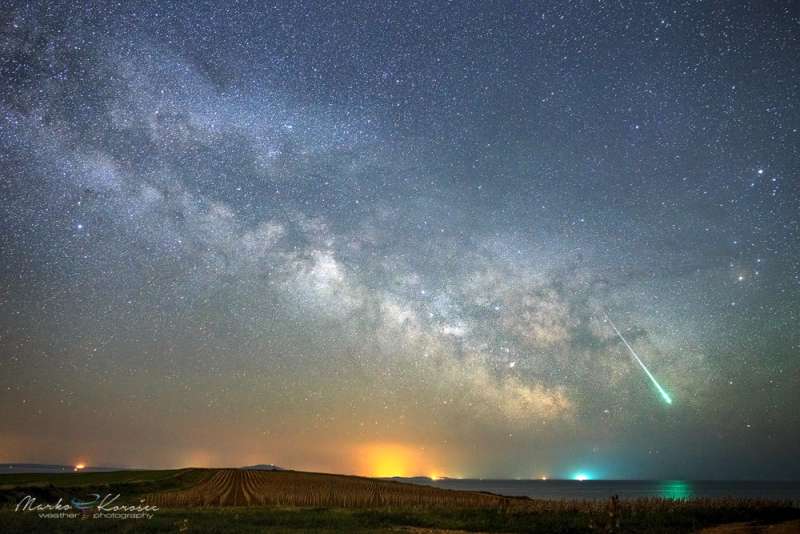
|
Credit & Copyright: Marko Korosec
Explanation:
Earth's April showers include the
Lyrid Meteor Shower,
observed for more than 2,000 years
when the planet makes its annual passage
through the
dust stream of long-period Comet Thatcher.
A grain of that comet's dust, moving 48 kilometers per second
at an altitude of 100 kilometers or so,
is swept up in this night sky view from
the early hours of April 21.
Flashing toward the southeastern horizon,
the meteor's brilliant streak
crosses the central region of the rising Milky Way.
Its trail points back
toward the shower's radiant
in the constellation Lyra,
high in the northern springtime sky and off the top of the frame.
The yellowish hue of giant star Antares shines to
the right of the Milky Way's bulge.
Higher still is bright planet Saturn, near the right edge.
Seen from Istra, Croatia, the Lyrid meteor's
greenish glow reflects in the waters of the Adriatic Sea.
|
January February March April May June July August September October November December |
| ||||||||||||||||||||||||||||||||||||||||||||||||
NASA Web Site Statements, Warnings, and Disclaimers
NASA Official: Jay Norris. Specific rights apply.
A service of: LHEA at NASA / GSFC
& Michigan Tech. U.
Based on Astronomy Picture
Of the Day
Publications with keywords: meteor - meteor shower
Publications with words: meteor - meteor shower
See also:
- APOD: 2025 August 25 Á The Meteor and the Star Cluster
- APOD: 2025 August 6 Á Meteor before Galaxy
- APOD: 2024 December 10 Á The Great Meteor Storm of 1833
- APOD: 2024 November 27 Á The Meteor and the Comet
- Meteor over the Bay of Naples
- Quadrantids of the North
- APOD: 2023 December 17 Á Geminids over Chinas Nianhu Lake
